Basic structure and lubrication parts of automobile glass lifters
1. Automobile glass lifters are divided into fork arm type, rope pulley type and flexible shaft type according to the transmission mode;
2. Components of automobile electric glass lifters: glass lifter motor, mechanical lifting mechanism and control system.
The rope pulley electric glass lifter consists of glass lifter motor, wire rope, guide plate, glass mounting bracket, etc.
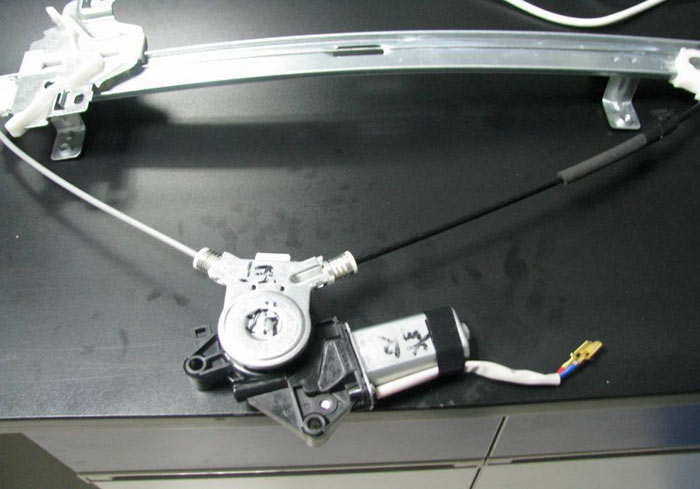
3. Working principle of automobile electric glass lifter: start the motor, drive the reducer to output power, pull the wire rope to move the glass installation bracket, and force the door and window glass to move up or down in a straight line.
4. Lubrication points of electric glass lifters:
A Lubrication points of fork-arm electric glass lifters
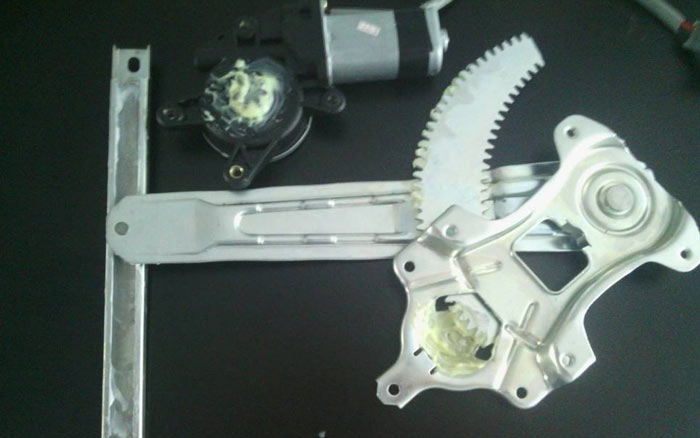
B Lubrication points of rope-type electric glass lifters
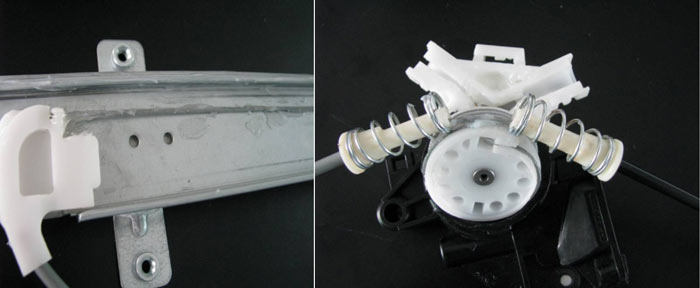
Some faults of glass lifter
| Serial number | Fault phenomenon | Fault cause | Fault handling |
| 1 | Glass cannot be raised or lowered | Reason of the motor itself (poor contact of brushes, etc.) | Replace the motor |
| 2 | Worm gear stuck, ablation | Replace the motor | |
| 3 | Wire rope broken (wire itself) | Replace the lifter | |
| 4 | Serious deformation of the bracket | Replace the bracket | |
| 5 | Serious wear of the gear sector (poor lubrication) | Replace the bracket or change the grease | |
| 6 | Glass lift shakes | Guide rails are seriously corroded, blocking or blocking glass operation (poor lubrication or foreign matter) | Replace bracket or grease |
| 7 | Worm gear slips, jumps teeth (poor lubrication) | Replace motor or grease | |
| 8 | Abnormal noise when lifting glass
|
Problems with the motor itself (large motor shaft clearance, etc.) | Replace motor |
| 9 | Dry grinding of worm gear (poor lubrication) | Replace the motor or change the grease | |
| 10 | Dry friction between wire rope and guide plate (poor lubrication) | Replace the motor or change the grease | |
| 11 | Dry friction between wire rope (poor lubrication) | Replace the motor or change the grease |
Hecheng Company’s lubrication solution for automobile glass lifters:Bench test simulates automobile glass lifters
Introduction to the experimental bench
1. The automobile electric glass lifter test bench is mainly composed of: electric control console and operating station;
2. The test bench has two stations, which can simulate the durability test of fork arm type, rope pulley type, and flexible shaft type glass lifters;
3. The test bench can monitor the starting current, stall current, and durability times when the glass rises and falls, so as to judge the durability life of the glass lifter.
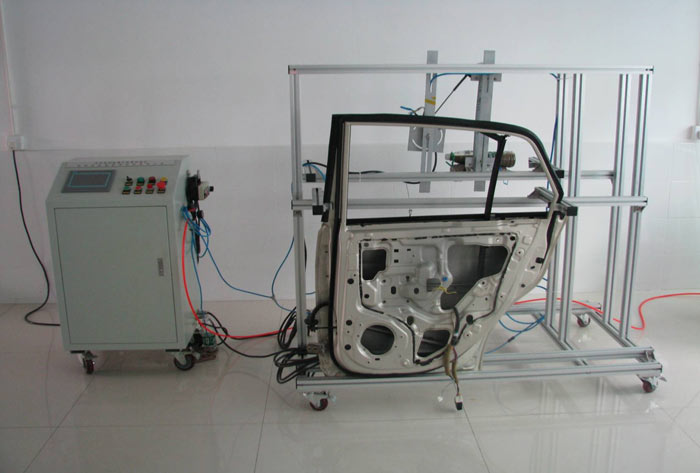
1. Select a rope-type electric glass lifter and use petroleum ether to clean the worm gear, wire rope and guide plate of the motor reduction mechanism;
2. Add different greases to the worm gear, wire rope and guide plate;
3. The current value sampling rules are as follows: every rise and fall of 1000-2000 times is a cycle, and sampling is carried out. Each time, the current value of 10 groups of opening and closing cycles is measured, including the starting current and the stall current of the rise and fall. This is repeated until a fault occurs and stops working or the expected durability is reached.
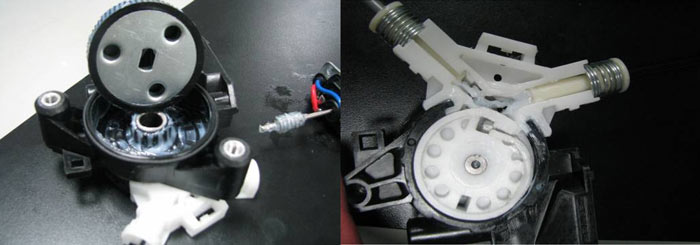
1. The worm gear reduction mechanism of the electric window lifter needs to be lubricated.
2. The mechanical lifting mechanism (gear fan, wire rope) needs to be lubricated.
The requirements for grease used in worm gears of electric glass lifts are as follows:
※Excellent high and low temperature resistance, applicable temperature range: -40~80℃, low temperature starting and running torque is extremely small;
※Low friction coefficient, good lubricity and adhesion, can reduce running noise for a long time;
※Outstanding water resistance and anti-corrosion protection;
※Good compatibility with most plastics and elastomers;
※Excellent oxidation stability, mechanical stability, colloid stability and anti-aging ability, extremely long service life.
The main technical parameters of electric glass lifts are nominal voltage, working voltage, rated load, glass stroke, glass rise time, maximum current consumption of motor, braking force and life. In addition, it must be able to withstand environmental tests such as high temperature, low temperature, salt spray, dust, water spray, vibration and impact, and the product should be able to withstand tests such as motor braking, motor overcurrent protection, electromagnetic compatibility, noise and life.
 Alibaba
Alibaba









